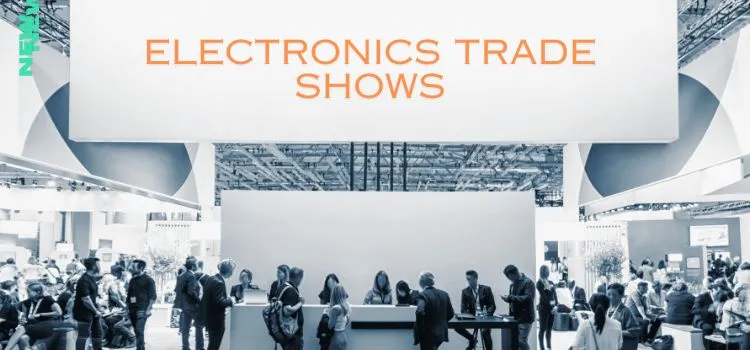
China’s importance in global electronics manufacturing and sourcing.
China is the world’s electronics manufacturing hub, producing over half of global electronics due to its massive labor pool, well-established infrastructure, extensive manufacturing experience, and low labor costs. It also serves as a procurement center for global electronics brands.
Opportunities and challenges of sourcing electronics from China.
Opportunities: Cost advantages, advanced technology, large domestic market;
Challenges: Cultural differences, intellectual property rights, risk of supply chain disruption.
Overview of the diverse sourcing channels available
I.Online Marketplaces

Alibaba.com:
The world’s largest B2B e-commerce platform, Alibaba boasts tens of millions of suppliers and products, encompassing a wide range of electronics.
Global Sources:
A leading global B2B trade platform, Global Sources facilitates connections between buyers and suppliers through professional trade shows and online trading services.
Made-in-China:
Dedicated to China’s manufacturing sector, Made-in-China offers a comprehensive database of Chinese manufacturers and products, supporting multiple languages and currencies.
DHgate:
Geared towards small-volume wholesale procurement, DHgate is renowned for its low prices and extensive product selection.
1688.com:
Alibaba’s subsidiary focused on China’s domestic market, 1688.com provides a vast array of high-quality sourcing options and convenient trading services.
II. Major B2C Marketplaces

A. Taobao: China’s E-commerce Giant
Taobao, owned by Alibaba, is China’s largest C2C e-commerce platform, offering a vast array of electronics products from individual sellers and small businesses. Buyers can discover unique and competitive deals on a wide range of items.
B. JD.com: The B2C Powerhouse
JD.com stands as China’s second-largest e-commerce platform, focusing on B2C transactions. Renowned for its authentic products and reliable customer service, JD.com offers a curated selection of electronics from established brands.
C. Pinduoduo: Social Commerce Pioneer
Pinduoduo has revolutionized e-commerce with its innovative social commerce approach, enabling group buying and flash sales. Electronics enthusiasts can find attractive deals on a variety of products through Pinduoduo’s group buying feature.
D. AliExpress: Reaching Global Consumers
AliExpress, an international arm of Alibaba, serves as a global marketplace connecting Chinese sellers with buyers worldwide. Electronics products are a major focus, with AliExpress offering a vast selection at competitive prices.
III.Trade Shows and Exhibitions

Major Electronics Trade Shows:
The Canton Fair – Guangzhou: China’s premier trade event, showcases a vast array of electronics products, attracting industry giants and facilitating global business connections.
China Electronics Fair (CEF) – Shanghai (Spring & Autumn): The largest exhibition of the electronics and ICT industries in China, showcasing a vast array of electronic products, components, and technologies.
Appliance & Electronics World Expo (AWE) – Shanghai: Focuses on cutting-edge innovations in consumer electronics, home appliances, and smart home solutions.
Guangzhou International Lighting Exhibition (GILE) – Guangzhou: Renowned for its comprehensive display of lighting technologies and solutions, attracting major players in the industry.
Nepcon South China – Shenzhen: A leading platform showcasing advancements in electronic manufacturing equipment, components, and technologies.
CPCA Show – Shenzhen: Dedicated to the passive components industry, featuring a wide range of passive electronic components like capacitors, resistors, and inductors.
IV. Major Wholesale Electronics Markets
A. Huaqiangbei Electronics Market (Shenzhen)
Nicknamed “Silicon Valley of China,” Huaqiangbei in Shenzhen is the world’s largest electronics market, offering a dazzling array of components, finished products, and everything in between. This market thrives on innovation and caters to a wide range of buyers, from hobbyists to large manufacturers.
B. Zhongguancun Electronics Market (Beijing)
Zhongguancun in Beijing, also known as China’s “Silicon Valley,” is another major electronics hub. This market focuses more on established brands and distributors, offering a curated selection of electronics and computer hardware.
V. Sourcing Through Suppliers’ Websites and Catalogs
Sourcing electronics directly through suppliers’ websites and catalogs offers a more tailored and direct approach compared to online marketplaces. Buyers can access detailed supplier information, explore specialized product offerings, and engage in streamlined communication.
As paid platforms like Alibaba impose higher fees on merchants, these costs inevitably trickle down to product prices. To combat this, merchants are increasingly turning to independent websites as a cost-effective solution. This trend is likely to continue in the future as businesses seek to optimize their margins and remain competitive.
VI. The Role of Sourcing Agents and Third-Party Services in Electronics Procurement

Beyond the diverse sourcing channels explored previously, navigating the complexities of electronics procurement in China can be further streamlined by leveraging sourcing agents and third-party services. Here’s how these entities play a crucial role:
Market Expertise and Supplier Network: Sourcing agents possess in-depth knowledge of the Chinese electronics market, including established suppliers, emerging players, and competitive pricing trends. Their extensive network of contacts facilitates efficient supplier identification and selection.
Quality Control and Inspection: Ensuring product quality is paramount. Sourcing agents can manage quality control processes at various stages of production, mitigating potential risks associated with counterfeit components or substandard materials. Pre-shipment inspections further safeguard the integrity of your purchases.
Logistics and Documentation: Electronics procurement often involves complex logistics and intricate documentation. Sourcing agents can handle these aspects seamlessly, ensuring smooth product movement from China to your designated location.
Language and Cultural Understanding: Cultural and language barriers can hinder communication. Sourcing agents bridge this gap by facilitating effective communication between buyers and Chinese suppliers, ensuring clear understanding of terms and specifications.
Cost Negotiation and Payment Management: Sourcing agents can leverage their market knowledge and relationships to negotiate competitive pricing on your behalf. Additionally, they can manage secure payment processes, minimizing financial risks.
Choosing the Right Sourcing Agent:
Selecting a reputable and experienced sourcing agent is crucial. Factors to consider include their industry expertise, track record, service offerings, and fee structure.
The Value Proposition of Third-Party Services
Beyond sourcing agents, a variety of third-party services can enhance your electronics procurement experience:
- Product Testing and Certification: Independent testing labs can verify product compliance with relevant safety and quality standards.
- Freight Forwarding and Customs Clearance: Freight forwarders specialize in efficient and cost-effective international shipping of electronics. They can also assist with customs clearance processes.
- Financial Services: Trade finance services can mitigate financial risks and provide flexible payment solutions.
VII. Social Media and Influencer Marketing in Electronics Sourcing
A. Navigating the Social Media Maze:
WeChat: The ubiquitous social media platform in China, WeChat plays a significant role in the electronics industry. Many suppliers maintain WeChat accounts to showcase products, interact with potential buyers, and facilitate transactions.
Social Media Ecosystem: Beyond WeChat, other social media platforms like Weibo (microblogging) and QQ (messaging app) offer additional avenues for electronics discovery and supplier engagement.
B. Leveraging Influencer Power:
KOLs and Influencers: Key Opinion Leaders (KOLs) and social media influencers can be valuable assets for sourcing electronics. These individuals often have established followings and the trust of their audience. Electronics brands and suppliers frequently partner with them to promote products and reach targeted consumer segments.
C. Live Streaming for Real-Time Sourcing:
Livestreaming Platforms: Live streaming platforms, particularly Douyin (TikTok China) and Xiaohongshu (Little Red Book), have become popular channels for electronics discovery and purchasing. Sellers showcase products in real-time, engage with viewers, and offer exclusive deals.
Interactive Sourcing Experience: Live streaming fosters an interactive experience, allowing buyers to ask questions, request product demonstrations, and potentially negotiate prices directly with sellers.
VIII. Supplier Evaluation and Quality Control

Identifying reliable suppliers and ensuring product quality are fundamental pillars of successful electronics sourcing in China.
A. Building Trust Through Verification:
Background Checks and Verifications: Conducting thorough background checks on potential suppliers is crucial. This includes verifying company registration details, production licenses, and certifications. Third-party verification services can offer additional peace of mind.
B. Gauging Capabilities Through Audits:
Factory Audits: On-site factory audits provide a comprehensive picture of a supplier’s capabilities. These audits assess factors such as production processes, quality control systems, worker safety standards, and adherence to environmental regulations.
C. Guaranteeing Quality from Start to Finish:
Ensuring Product Quality and Compliance: Implementing a robust quality control program is vital. This program should encompass pre-production checks of raw materials, in-process inspections during manufacturing, and final product inspections before shipment. Ensuring compliance with relevant safety and quality standards is also paramount.
Additional Considerations:
Sample Orders: Requesting and meticulously evaluating sample orders allows for preliminary assessment of product quality and adherence to specifications.
Long-Term Relationships: Building strong, long-term relationships with reliable suppliers fosters trust and promotes consistent quality throughout your sourcing journey.
By employing these rigorous supplier evaluation and quality control measures, buyers can mitigate risks, safeguard their investments, and ensure they receive high-quality electronics that meet their exact requirements.
IX. Logistics and Shipping Considerations
Electronics procurement often involves complex logistics and international shipping. Key considerations to ensure a smooth and efficient delivery process:
A. Mastering the Language of Trade: Incoterms
Understanding Incoterms: Incoterms (International Commercial Terms) establish a clear framework for defining responsibilities, risks, and costs associated with international goods movement. Familiarizing yourself with Incoterms ensures a clear understanding of who is responsible for tasks like loading, transport, customs clearance, and insurance at each stage of the journey.
B. Partnering for Efficiency: Freight Forwarding and Customs Clearance
Freight Forwarding: Engaging a reputable freight forwarder simplifies the logistics process. These specialists help navigate international shipping regulations, manage customs clearance documentation, and ensure timely product delivery.
Customs Clearance: Customs clearance can be a complex process. Collaborating with an experienced freight forwarder streamlines this aspect, minimizing delays and potential disruptions.
C. Optimizing Your Supply Chain: Lead Times and Inventory Management
Managing Lead Times: Understanding lead times, which encompass production time, shipping duration, and customs clearance procedures, is crucial for effective inventory management.
Inventory Management: Balancing inventory levels with projected demand ensures product availability while minimizing storage costs. Implementing effective inventory management practices optimizes your supply chain and reduces the risk of stockouts or excess inventory.
Additional Considerations:
Shipping Options: Choosing the optimal shipping method depends on factors like cost, speed, and cargo size. Options include air freight, sea freight, and express courier services.
Risk Management: Considering insurance options helps mitigate potential risks associated with damage or loss during transportation.
By understanding Incoterms, collaborating with reliable logistics partners, and implementing strategic inventory management practices, buyers can ensure their electronics arrive at their designated location efficiently, cost-effectively, and on time.
Recap: Unveiling the Diverse Landscape of Electronics Sourcing in China
China’s position as a global electronics powerhouse offers a myriad of sourcing channels for buyers.
Online Marketplaces: Giants like Alibaba.com and regional platforms cater to B2B procurement across a vast product spectrum.
Consumer-Oriented Marketplaces: Taobao, JD.com, and Pinduoduo offer electronics sourcing opportunities for those seeking competitive deals, with due diligence required.
Wholesale Markets: Huaqiangbei and Zhongguancun provide a hands-on buying experience with a focus on bulk purchases and discovering unique electronics.
Trade Shows and Exhibitions: Major events like the China Electronics Fair offer valuable insights into industry trends and facilitate connections with potential suppliers.
Supplier Websites and Catalogs: Direct communication with suppliers through their websites allows for tailored product selection and streamlined communication.
Sourcing Agents and Third-Party Services: These entities offer expertise, quality control, logistics management, and cultural understanding, streamlining the sourcing process.
Social Media and Influencer Marketing: Platforms like WeChat, Xiaohongshu, and Douyin provide innovative avenues for electronics discovery and supplier engagement.
The Power of Diversification: Why a Multifaceted Approach is Key
Relying solely on a single sourcing channel limits your options and potentially exposes you to missed opportunities or price inflexibility. A diversified sourcing strategy offers distinct advantages:
Access to a Wider Product Range: Explore a broader spectrum of electronics across various platforms and channels.
Competitive Pricing: Compare prices and negotiate favorable deals by leveraging multiple sourcing options.
Supplier Redundancy: Mitigate risks by having alternative suppliers in case of disruptions or quality issues.
Market Insights and Trends: Gain a more comprehensive understanding of the electronics market through diverse sourcing experiences.
Tips for Successful Electronics Sourcing in China
By strategically navigating this dynamic landscape and keeping these final tips in mind, you can optimize your electronics sourcing endeavors in China:
Conduct thorough research: Research potential suppliers, understand product specifications, and compare pricing across platforms.
Negotiate effectively: Develop strong negotiation skills to secure competitive pricing and favorable terms.
Prioritize quality control: Implement quality control measures throughout the sourcing process to ensure product authenticity and functionality.
Embrace cultural sensitivity: Be mindful of cultural differences and build strong relationships with suppliers through effective communication.
Stay informed: Keep abreast of industry trends, regulations, and potential risks associated with electronics sourcing in China.
By employing a diversified sourcing strategy, coupled with these valuable tips, you can navigate the exciting world of electronics procurement in China with confidence and efficiency.
HnThai offers wholesale electronics and purchasing agent services. We have an independent website, a Huaqiang North stall, and operate on platforms like 1688 and Alibaba. Contact us for the best pricing!







